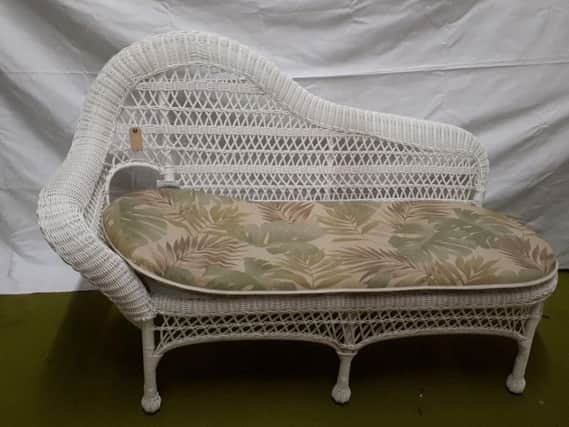Wicker furniture attractive option for the conservatory


At this time of year, what better place to relax at the end of the day than a conservatory? Every conservatory deserves to be well dressed, and nothing fits that better than wicker furniture.
Wicker is the general term used to describe furniture woven with pliable materials, including Lloyd Loom, rattan, willow, cane, raffia, grasses and most recently plastic or resin strands. The material is typically cut into strips, dried, then soaked in water to make it flexible, before being woven around a shaped frame.
Advertisement
Hide AdAdvertisement
Hide AdOne of the oldest methods of making furniture, it is an ancient and delicate craft which started as basket making. By the 17th century, wicker furniture looked much like it does today. It continues to be popular due to its air of handcrafted comfort, and it is lighter than more ‘formal’ furniture.
This elegant left hand chaise longue style wicker sofa fits the bill perfectly. With comfortable cushions and a rounded end perfect for reclining with a glass of wine, it’s in the centre until someone whisks it off to their own conservatory.
While wicker furniture is still widely produced today, a lot of people like vintage pieces. Less mass produced, they often retain more pleasing detail and shaping. The heyday of rattan (an Indonesian vine) and bamboo furniture design tallied with the height of Empire in the 19th century.
Contrasting with the more usual heavy Victorian furniture, by the 1870s it was a staple of most homes: elegant conservatory furniture for the rich, and economical everyday furniture for poorer households. After a lull in the early 20th century, the 1930s saw designers producing stunning Art Deco styles, originals of which now fetch thousands of pounds.
Advertisement
Hide AdAdvertisement
Hide AdDating can be difficult as vintage pieces often lack their original cushions (where the manufacturer’s label was usually fixed).
It’s important to check the condition. Painted wicker can last well, but is of course less durable than solid wood. Specialists can work wonders replacing frayed strips, but larger repairs such as replacing whole chair seats can quickly get costly. ‘Shabby chic upcycling’ is a popular trend to revitalise tired wicker pieces with sympathetic paint tones. If that seems too much work, just focus on that rewarding sit down!